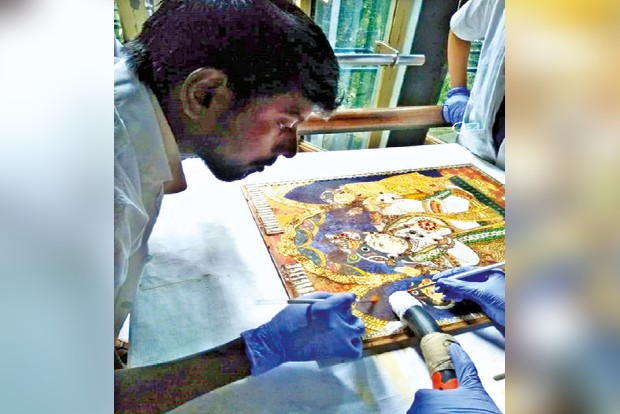Begin typing your search...
Conservator develops unique method to restore Tanjore paintings
An assistant conservator at the conservation lab in DakshinaChitra heritage museum, L Amirthanathan has come up with a new method of restoring Tanjore panel paintings. He tells us that to understand the restoration process, one has to first know the Tanjore painting style method.

Chennai
“Traditionally, jack fruit tree wood is used as the base material of the painting. It is durable and is affected by insects. On top of that, one has to apply Arabic gum and place a cloth on it. On the cloth, chalk powder and Arabic gum will be added. If necessary, you can make another layer as well. Once dried, it is rubbed with a fine emery sheet. and the image to be traced will be placed on it. Then, it is decorated with colour glass beads. After this, gesso is applied to important embossing areas of the image. Then gold foils are applied on embossed parts,” says Amirthanathan.
Explaining the process behind the restoration, the conservator adds, “If possible, use the same material that is used in the old painting for restoration. If there is a crack on the base, use balsite for filling. There are two varieties of balsite -- hardner and softener. You can use both to fill the cracks. If gesso is missing, use chalk powder and Arabic gum to fill it. If the cloth is damaged, first place a similar cloth with the same thickness on it and then apply gesso and pigment. If the gold foil is damaged, restore it with the foil. We can only use natural pigments with Arabic gum for retouching. If it is affected by fungus, 0.5 ml Ortho Phenylphenol and 100 ml ethanol are sprayed to kill the fungi. After removing the fungus, do vacuum cleaning or soft brushing to clean the fungus.”
Visit news.dtnext.in to explore our interactive epaper!
Download the DT Next app for more exciting features!
Click here for iOS
Click here for Android
Next Story



